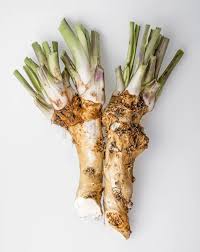
Horseradish is a root vegetable known for its pungent taste and odor. It contains multiple compounds that provide health benefits, including anti-bacterial and anti-cancer effects.
Horseradish has been used worldwide for thousands of years, typically as a condiment but also for medicinal purposes.
It is a cruciferous vegetable with long, white roots and green leaves. When the root is cut, an enzyme breaks down a compound called sinigrin into a mustard oil.
This oil, known as allyl isothiocyanate, gives horseradish its telltale odor and taste and may irritate your eyes, nose, and throat. The root is typically grated and preserved in vinegar, salt, and sugar for use as a condiment. This is known as prepared horseradish. Horseradish sauce, which adds mayonnaise or sour cream to the mix, is also popular.
Since horseradish is usually eaten in small amounts, a typical serving is very low in calories but contains several minerals and plant compounds including calcium, potassium, magnesium, folate, and other micro-nutrients. Even in small amounts, horseradish provides several potential health benefits.
Do you eat horseradish? Have you tried growing it? Have you tried using it in a tea or tincture? What are your thoughts? I would love to know!
If you want to purchase this herb, please consider using this affiliate link to purchase it. I highly recommend this link because of how they process and store herbs. You can’t always trust who you purchase from online, but with this company, I truly do feel it is top of the line and high quality. Just go to this link and type in ‘horseradish’.
If you would like to find out more about the author or learn about other herbs, please consider visiting this link.
Stay natural!
~Dr. Amanda P. Cartwright